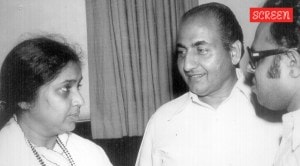There can’t be a better instance to tell what the legendary scientist and Father of India’s Green Revolution, Dr M S Swaminathan (98), who passed away Thursday, meant for the farmers, especially in Punjab, which spearheaded the Green Revolution and made the country self-sufficient in food production.
Such was Swaminathan’s popularity that in 2019, Manjit Singh Gill, a farmer-cum-sculptor from the Ghal Kalan village in Punjab’s Moga district, built a statue of the “living legend” and installed it on his farm.

Gill never met “Swaminathan saab” in person but the statue has gained so much popularity that thousands of farmers have visited his farm in the last four years just to have a glimpse of the sculpture.
Story continues below this ad
On Thursday, while speaking to The Indian Express, Gill said, “He was the one who thought about us (farmers) more than anyone else did.” Gill added that Dr Swaminathan had devoted his entire life to constantly thinking about how to improve the lives of the farmers and how to give them what they deserve.
 Gill never met “Swaminathan saab” in person but the statue has gained so much popularity that thousands of farmers have visited his farm in the last four years just to have a glimpse of the sculpture. (Express Photo)
Gill never met “Swaminathan saab” in person but the statue has gained so much popularity that thousands of farmers have visited his farm in the last four years just to have a glimpse of the sculpture. (Express Photo)
While the Swaminathan report is famous among the farmers, Gill said that hardly anybody related to farming and agriculture knew what he looked like. “For us farmers, he was our everything. Hence, I had given him a unique tribute by installing his statue in my village,” Gill said.
In the last four years, thousands of farmers have visited Gill’s farm just to have a glimpse of the statue. Many, Gill said, click selfies with it.
Responding to Gill’s gesture of installing his statue, Dr Swaminathan in an email response to The Indian Express, had written in 2019, “Please convey my best wishes to this Punjab farmer.”
Story continues below this ad
The renowned scientist, who died in Chennai, had also recalled a large get-together organised by Punjab farmers near the Golden Temple in Amritsar. “A few years ago, the farmers of Punjab had arranged a large get-together at Amritsar (near the Golden Temple) to celebrate my first visit with new seeds of wheat in 1964. I have the highest regard for Punjab farmers.”
 Gill, in his artwork, has shown Dr Swaminathan as a farmer’s true friend — with one hand placed gently on the shoulder of a Sikh farmer and the other holding a copy of his National Commission on Farmers report that was released in 2006. (Express Photo)
Gill, in his artwork, has shown Dr Swaminathan as a farmer’s true friend — with one hand placed gently on the shoulder of a Sikh farmer and the other holding a copy of his National Commission on Farmers report that was released in 2006. (Express Photo)
He, however, had a piece of advice both for the Punjab government and the farmers. “The groundwater situation in the state isn’t good. Free electricity should be avoided, since it promotes excessive pumping of water,” he had said.
Gill, in his artwork, has shown Dr Swaminathan as a farmer’s true friend — with one hand placed gently on the shoulder of a Sikh farmer and the other holding a copy of his National Commission on Farmers report that was released in 2006.
In 2019, Gill had shared that while the basics of the Swaminathan report — right prices for their crops and at least 50 per cent return over and above their production cost — are ingrained in the minds of the farmers, they hardly know about the other aspects of the report.
Story continues below this ad
Behind the artwork, there is a board that questions, “During the elections, all political parties talk about implementing the Swaminathan Commission report but nobody actually does so. Do you know what the Swaminathan report is? And how can farmers benefit from it?”
On his inspiration to erect a statue, Gill had said, “I have seen my father, a 70-year-old farmer, till our fields all his life without being able to recognise the person whose report and work as a scientist has made such a huge difference to our lives.”
He added, “My father did not even know what Dr Swaminathan saab looked like. Many people here think he is a turbaned man who wears a dhoti. So, I decided to make a statue.”
Gill had spent over two months making the sculpture. He had collected around 20 photographs of Dr Swaminathan to get the features right.
Story continues below this ad
The farmer portrayed in the statue, surprisingly, is somebody ploughing a field with a pair of bullocks, rather than tractors, which are present everywhere in Punjab.
“I did it deliberately to show what the current status of the farmers of Punjab is. The wheat varieties that scientists led by Dr Swaminathan saab bred during the 1960s and 1970s helped increase our per-acre yields more than five times. Today, the condition of the farmers is back to what it was earlier,” Gill had said.
The statue is open to all and Gill doesn’t charge any fee.
Gill worked as an art executive with the Punjab government’s department of museums for four years before taking voluntary retirement in 2014 to pursue his farming and artistic passions.


 Gill never met “Swaminathan saab” in person but the statue has gained so much popularity that thousands of farmers have visited his farm in the last four years just to have a glimpse of the sculpture. (Express Photo)
Gill never met “Swaminathan saab” in person but the statue has gained so much popularity that thousands of farmers have visited his farm in the last four years just to have a glimpse of the sculpture. (Express Photo) Gill, in his artwork, has shown Dr Swaminathan as a farmer’s true friend — with one hand placed gently on the shoulder of a Sikh farmer and the other holding a copy of his National Commission on Farmers report that was released in 2006. (Express Photo)
Gill, in his artwork, has shown Dr Swaminathan as a farmer’s true friend — with one hand placed gently on the shoulder of a Sikh farmer and the other holding a copy of his National Commission on Farmers report that was released in 2006. (Express Photo)






